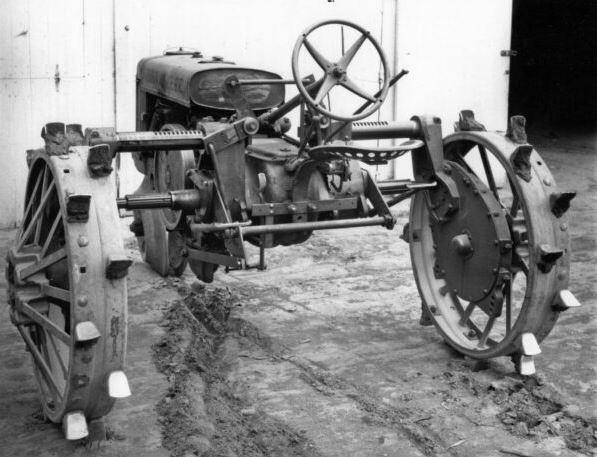Then, much more than today, farmers used varying widths between the plants in their fields. While a certain width might have been custom for a certain crop in one area of the country, another width would have been standard in another area or for another crop.
Deere tried to appeal to all of the farmers it could with the “GP,” even producing a narrower version of the tractor specifically for potato farmers.
These tractors had telescoping driveshafts leading from the tractor’s transmission housing to the final drives at the wheels.
Support shafts above the driveshafts were notched. To adjust the tread of the tractor in or out, a ratchet system attached to the power lift on the “GP” was employed while running the tractor along the ground.
The driveshafts simply expanded or contracted as was necessary while the ratchet system moved the support shafts.

No comments:
Post a Comment